#Emperor Septimius Severus
Text


Ancient Monumental Marble Map of Rome on Display After 100 Years
A marble map of ancient Rome, that hasn't been put on public view for almost 100 years, is getting its very own museum within sight of the Colosseum.
The Museum of the Forma Urbis, enclosed within a new archaeological park on one of Rome's famous seven hills opens on Friday -- the latest offering from a city that is eager to broaden its attraction for growing hordes of tourists, according to Reuters.
"This is a beautiful day. We are opening an archaeological park in an extraordinary part of the city and a new museum showcasing a masterpiece which has not been visible for about a century," said Rome Mayor Roberto Gualtieri.
"We want a city where the museums and the streets are linked, and where people, while walking around, can fully appreciate and enjoy the beauty, but also better understand how our city has been transformed."
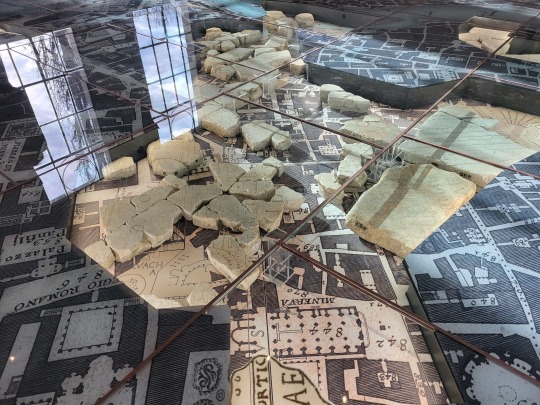

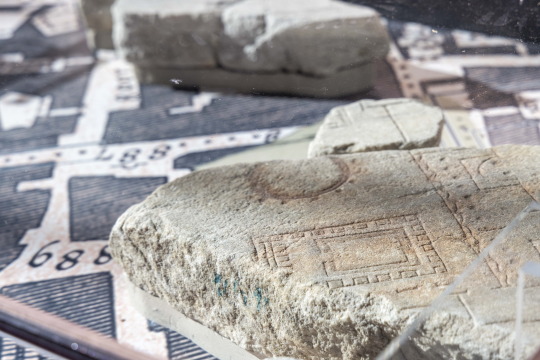
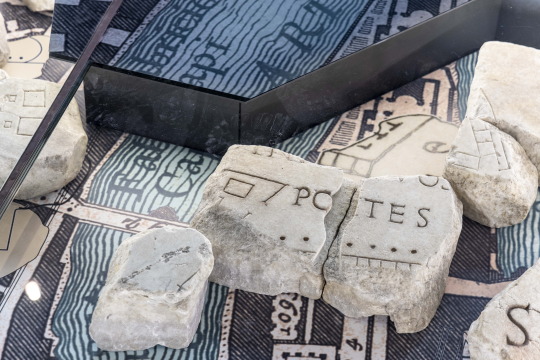

The Forma Urbis was a monumental, highly detailed marble map of ancient Rome carved during the reign of the Emperor Septimius Severus between 203 and 211 AD, engraved onto 150 separate slabs and measuring 18 by 13 metres (60 by 43 feet).
It was displayed on a wall in the ancient city, but over the centuries it gradually disintegrated, with locals using some slabs for new buildings.
During excavations in 1562, fragments were recovered and scholars estimate around 10% of the whole has survived, including sections showing the Colosseum and Circus Maximus, as well as floor plans of baths, temples and private houses.
The huge carving has proved a valuable resource for understanding the layout of ancient Rome, but all the remaining pieces have not been shown together since 1924.
In its new, innovative setting, the fragments have been laid out on a reproduction of a famous map of Rome created in the 18th century by the surveyor Giovanni Battista Nolli, who is credited with making the first accurate street plan of Rome.
The marble chunks lie on top of the Nolli map, showing their relation to the developing Renaissance city.


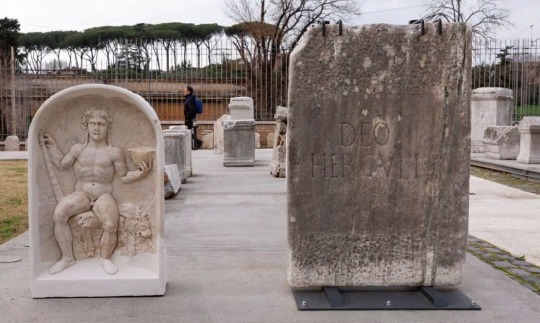

Outside the museum, in the open-air park on the side of the Caelian Hill, archaeologists have out laid out walkways lined with ancient Roman grave markers and marble columns found in excavations around the city in recent decades.
"The Caelian Hill, one of the seven hills of ancient Rome, has remained in the shadows, unknown and inaccessible for a very long time. Today, we are finally giving it back to the city," said Claudio Parisi Presicce, who oversees Rome's cultural heritage.
"The hill has a special importance because it is what unites the monumental area of the Imperial Forums, the Roman forum, the Colosseum and the area of the Appia Antica," he said.
The 5-million-euro ($5.5 million) project is part of a broader refurbishment of Rome, which has seen a tourism boom since the end of the COVID-19 pandemic and is expected to be submerged by visitors in the 2025 Roman Catholic Holy Year.

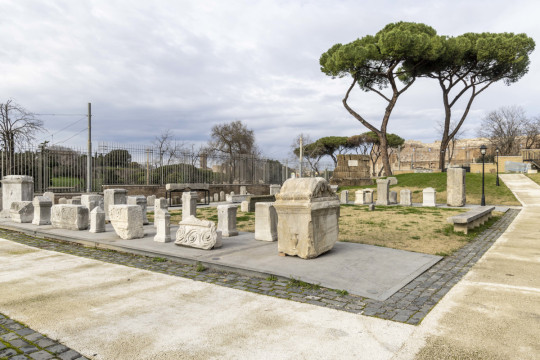
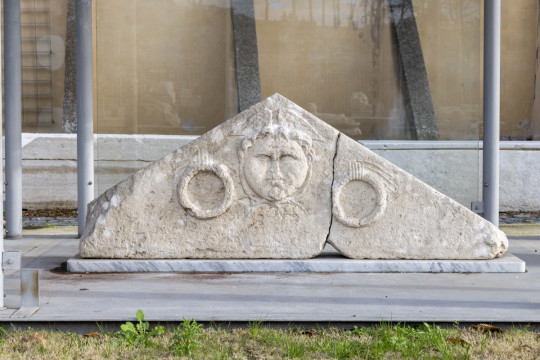

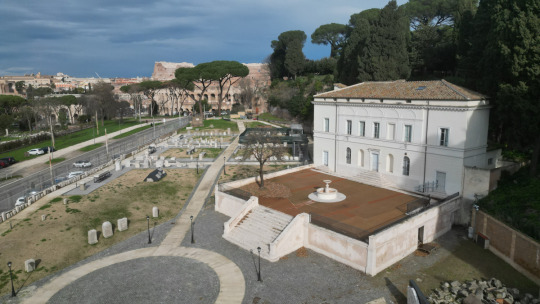
#Ancient Monumental Marble Map of Rome on Display After 100 Years#The Museum of the Forma Urbis#The Forma Urbis#Emperor Septimius Severus#ancient artifacts#archeology#archeolgst#history#history news#ancient history#ancient culture#ancient civilizations#ancient rome#roman history#roman empire#roman emperor#roman art
152 notes
·
View notes
Text

Septimius Severus
3rd century CE
British Museum
London, July 2022
#Septimius Severus#Roman#emperor#bust#ancient#art#beard#hairstyle#3rd century BCE#British Museum#my photo
42 notes
·
View notes
Text
1 note
·
View note
Text
Something I think ppl who aren't used to it struggle with when it comes to ancient history is that frequently 'we do not and cannot know this' is the only truthful response a historian can give. People severely overestimate how much we actually know about Ancient Rome.
I remember talking to someone at a party once about the debate over Septimius Severus's ethnicity (whole other can of worms) and they asked if genetic testing of his remains was not a way to settle it and I was like oh. Oh okay you are under the impression we have the physical remains of Roman emperors from the second century AD alright then. (We. Do not.)
29K notes
·
View notes
Text

The Arch of Roman emperor Septimius Severus at Leptis Magna, Libya.
Photography by David Gunn. Public Domain/ Wikimedia Commons.
Lucius Septimius Severus born in Leptis Magna, Africa, was the first Roman emperor of North African origin. During his reign (193-211) he favored his hometown, which became one of the most important Roman cities in North Africa along with Carthage and Alexandria.
For the Romans AFRICA was not the name of the continent - as it is for us - but a Roman province that included the territory of Tunisia, the coast of Libya along the Gulf of Sidra and northeastern Algeria.
The Leptis Magna archaeological site is located near Tripoli in Libya. World Heritage Site since 1982.
816 notes
·
View notes
Text
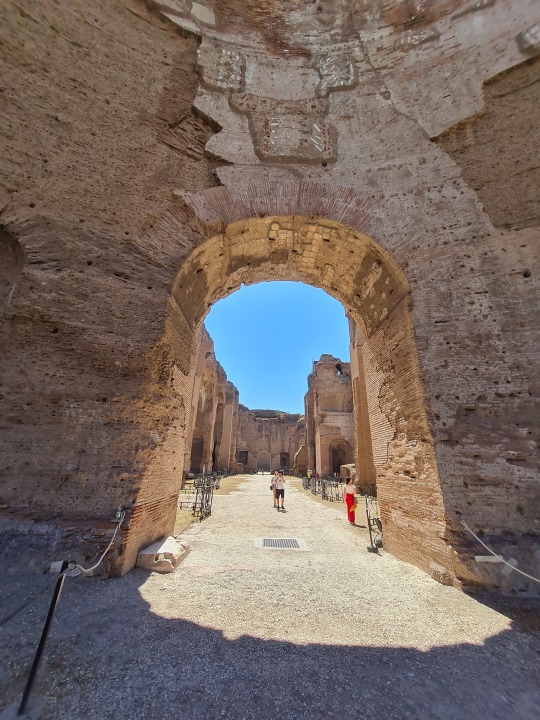


The Baths of Caracalla in Rome, Italy
The thermae were probably constructed during the reigns of the emperors Septimius Severus and his son Caracalla. This was between 211 and 216/217 AD.
#baths of caracalla#ancient rome#roman history#ancient history#ancientmonuments#archaeology#roman empire#caracalla#roman emperor#bath house#roman architecture#rome#roma#italia#italy#rome italy#travel#traveling#travel photography#history#culture#architecture#mosaic#roman mosaic#travel blog#wanderlust#explore#road trip#lazio#original photography
243 notes
·
View notes
Text
Notes on Africans in republican Rome, from Gruen's "Romans and Others":
Rome had a significant population of Black and African-descended people, across a wide array of professions. For any work set after ~250 BCE, there should definitely be Black people in Rome.
Most African Romans were probably originally slaves, either bought through the slave trade, or taken as prisoners of war.
Slavery was not specifically associated with African people, or with any particular ethnic group. The high rate of manumission in cities lead to many Africans holding Roman citizenship.
Roman beauty standards favored light skin, but otherwise the Romans seem to have considered skin color irrelevant.
Intermarriage was common, and busts survive of wealthy Romans with more African facial features, indicating a degree of social mobility.
The Romans did stereotype ethnic groups, but prejudice doesn't appear to have been harsher toward Africans than toward Gauls, Germans, Iberians or Greeks, and there are positive portrayals of Africans in the works of Plautus, Diodorus, Seneca the Younger, Lucian and Philostratus.
The most famous African Romans are Terence the playwright, the emperor Septimius Severus, and Saint Augustine.
Also, Gruen doesn't discuss this, but Roman Africa was actually one of the wealthiest provinces in the empire, had its own Romance language, and many people immigrated there for a better life!
(Erich Gruen, “Romans and Others,” in A Companion to the Roman Republic, ed. Nathan Rosenstein and Robert Morstein-Marx)
(Gruen does use some language that is now outdated or uncomfortable; I will forgive him on account of him being 89, and his overall conclusions are meant to correct racist ideas.)
#things to whack racists with#african romans#erich gruen#jlrrt reads#a companion to the roman republic#Roman diversity#jlrrt essays
79 notes
·
View notes
Note
any clues on whats next after tsv ends ? :)
No concrete confirmation, but we did put out a Patreon post back in spring with a few draft pitches, to gauge initial interest and see what kind of genre storytelling folks were most excited to see from us.
I'll paste them below, so you can see the kinds of things we've had in mind (#2 and #3 were the most popular, but it was a fairly even spread outside of that). We've had a few more really fun ideas since then that I'll keep schtum about for now.
General feedback was that people were most enthusiastic about seeing ongoing, multi-season projects from us, which makes perfect sense and is much more sensible for us anyway in terms of sustaining a livelihood / retaining audience members along the way.
That said, TSV has been a three-year endeavour which is a big commitment, and personally I think the best horror is often self-contained, short and sweet.
So I'd really love to have the time to work on a few miniseries-type shows as well, but also need to recognise that we likely don't have the bandwidth to juggle two projects simultaneously.
With all that in mind, I think the direction we're hoping to be able to pursue is:
1+ shorter horror miniseries or one-offs with production or network partners (if they want to work with us) where we're largely on writing duties or with a lighter load.
1 longer, ongoing weird-fiction show which is all ours, baby, all ours.
Draft pitches
#1: Manes
Genre: Historical horror, cosmic horror, family drama with murderous stakes
Influences: The Terror Season 1, pretty much.
Summary: In 208 AD, the ailing Roman emperor Septimius Severus travels north across Hadrian's Wall into Caledonia, with the aim of finally uniting Britain under imperial rule.
For Severus, there's more at stake - his two sons are openly at odds over the succession, and it's openly said that civil war will follow the emperor's death.
Severus himself rose to supreme power through violence and the elimination of his rivals. Now, haunted by the possibility of revenge by the shades of the divine dead and dwelling unhappily on his legacy, the emperor hopes to share his final triumph with his sons and demonstrate a different lesson to them - that an equitable peace is a lasting possibility.
But as the Roman column makes its way north into apparently endless woods, surrounded by cronies, schemers, Britons, soothsayers, priestesses of Cybele, and more, the emperor and his family find that their enemy is nowhere to be seen - but they are being pursued by a force that is both strange and terrible.
And soon enough, the Romans realise that they have perhaps strayed not into Caledonia at all - but into a hostile realm of their own imagining...
Why make this show? We adore period horror, and there's far too little of it out there.
Severus and his family are a fascinating set of characters who we'd love to spend some time with - as ethically-compromised participants in a very Shakespearean tragedy, and as individuals whose heritage, religious beliefs and psychologies allow us to explore aspects of ancient Rome that haven't been done to death in fiction already.
#2: I'll Dance In The Deep Shadow
Genre: Weird-fiction noir, paranoid espionage fiction, cosmic horror
Influences: Cold War spy classics, Roadside Picnic
Summary: Across the water from the mainland UK, a vast walled city has come unexpectedly into existence.
The city’s walls are composed of purest shadow; its leaders have not revealed themselves to us, nor have they made demands of us.
Upon its streets, our own dead and forlorn doubles wander; grinning doppelgangers who seem to know something terrible from the future that’s to come.
We call the city Umbra.
Umbra is a bottomless well of shadow and secrets; its darkened landscapes are home to suppressed memories turned savage and monstrous.
Its citizens and its guards are twisted echoes, repetitions, and whispering relics of the world's buried past - and they will not reveal Umbra's purpose to us.
Around Umbra's great walls, representatives from the world's governments gather and plot against one another - mercenaries, guides, spies, black-market traders, scientists and killers - to infiltrate the city, map its streets, and navigate its dangers for themselves.
Why make this show? Less of an Eskew sequel than it probably sounds at first glance, this one.
We'd love to do a paranoid, twist-filled, pessimistic John Le Carre-style spy thriller, with multiple characters who can neither trust themselves nor each other - and we feel like we've got some really interesting horror themes around memory and forgetting here to explore with this concept.
#3: Our Wars Have Ended
Genre: Dark fantasy, New Weird fantasy
Influences: The Black Company, the Bas-Lag series, Gormenghast.
Summary: It’s a strange time to be alive.
Thirty years ago, countless legions of the ancient dead rose from their graves to conquer the living lands; lands which now rest in an uneasy - but peaceful - state of occupation.
Withered corpses sit upon the thrones of the living and play silent courtier in the shadowed halls, acting out the rituals and habits of their past lives while dead men and women keep watch from the ruined towers.
Mortal historians and linguists frantically mediate between our returned masters, trying to keep the peace - which estate belongs to whom? Who shall rule eternal? Which traditions deserve to live on?
But this is a time of wondrous change, too - new technologies, empowered by the revelations of the Dead Reclamation and the will of the Ancestors. Strange machines rumble through the hills and necronautical vessels delve into the unexplored territories of the afterlife itself.
And it has been announced that the Hollowbrow Queen will unite the nation with a powerful gesture, taking on a living consort in a marriage of the fleeting and the eternal.
On one side of the conquered country, an old veteran leads his mercenary company on a reluctant expedition towards the capital, in the employ of a long-dead king on a mission of revenge.
On the other, a young dead-diver and essayer into the realms of the dead is hired to investigate a peculiar mystery, and a conspiracy that may involve both the living and the returned…
Why make this show? Because Game of Thrones had no interest in the (to us) enjoyable questions of 'well, why do the ancient dead want to conquer the living, exactly? What happens once they've done it?' and we'd love to deconstruct that and play with the idea of loathsome undead aristocrats from every period of history squabbling with one another over what their conquered nation actually means.
Because we think we've built up the confidence and the skills to take a big swing at an epic adventure story and a semi-traditional fantasy - it feels like an idea that could potentially appeal to a wider audience while remaining true to our own core values of Weirdness, Horrible Things and More Weirdness.
#4: To Those Who Wait
Genre: Cosmic horror, dark comedy, mockumentary
Influences: Dead Set, Ghostwatch, Savageland, Evil Dead
Summary: Eskew Productions has gone in a surprising direction with its latest production - a new reality experiment and dating-show podcast.
Eight lovelorn singletons have been given rooms in the exclusive Gregory Hotel. Over the course of six weeks, these contestants will go on dates, carry out team challenges, and ultimately try and find themselves a life partner - all without seeing each other's faces.
The aim of the experiment? To prove that good things really do come to those who wait.
As they pore through a mixture of recorded and behind-the-scenes footage, however, it may become very apparent to listeners that something else is waiting in the Gregory.
And one by one, our contestants find themselves at risk of far more than being voted off...
Why make this show? As a great big act of play more than anything else.
We adore horror mockumentaries, but in audio-drama they tend to be faux-journalistic.
Doing a show that instead mimics hokey reality shows to the point of being mistakable for the real thing, but turns out to be a ghost story instead...that's a lot of fun to us.
#5: In The Devil's Counties
Genre: Historical horror, cosmic horror
Influences: Nathan Ballingrud's Wounds, Seven Samurai, Between Two Fires, Dog Soldiers, Aliens…
Summary: As the Magna Carta states: “All evil customs relating to forests and warrens, foresters, warreners, sheriffs and their servants, or river-banks and their wardens, are at once to be investigated by twelve sworn knights of the county, and within forty days of their enquiry the evil customs are to be abolished completely and irrevocably.”
In early-medieval Sussex, a motley group of knights rides out to investigate tales of ungodly horror and acts of forbidden worship from deep in the English countryside - including Ralph Dagworth, 'hell's mapmaker'.
What the party of knights discovers out in the warrens and the forests of the county, however, is far stranger and more terrible than any Christian conception of hell…
Why make this show? Again, because we're itching to have a go at some period horror, and that weirdly specific Magna Carta quote is just too fun to pass up as a springboard for some 'isolated squaddies in enemy territory' storytelling. (Sadly, it does have a more grounded explanation.)
#6: Strangling Knot
Genre: Anthology horror
Influences: Junji Ito, experimental 8-bit horror, Black Mirror's Bandersnatch
Summary:
“The rules of the game are simple. This is a place of endless forking paths and one exit.
There’s something terrible in here with you. Get ready."
A Choose Your Own Adventure-style horror audio anthology; each episode is a distinct story with branching paths that may lead to failure (most of the time) or escape (more rarely).
Why make this show? This is likely the only show that we could reasonably produce as a side-project (and we've been chatting to a couple of other talented horror creators about it already, sssh).
We'd like to be able to play with single-narrator horror storytelling again that's relatively quick and easy to produce - but we do want to at least try and ensure it doesn't feel like we're repeating I Am In Eskew.
There's some really fun stuff happening out there already with CYOA-style audiodrama, and that seems like an opportunity that's ripe for playing about with.
118 notes
·
View notes
Text

Marble portrait of the emperor Caracalla. 212–217 CE. x
Caracalla took the official name of M. Aurelius Antoninus Pius as part of the Severan dynasty’s attempt to appear as the legitimate and worthy successors of the secondcentury Antonine emperors. Despite this, in his official portraiture, he abandoned the luxuriant hair and beard of his predecessors for a military style characterized by closely cropped curls and a stubble beard. An ancient source records that on his deathbed, his father Septimius Severus advised Caracalla to “enrich the soldiers and despise everyone else.” This finely carved head is a powerful rendering of the official portrait and was probably produced at an imperial
workshop, since the statue fragments are said to have been found in Rome. It is from a statue, the legs of which also survive and are displayed in the Study Collection on the Mezzanine Floor.
126 notes
·
View notes
Photo

Caracalla
Caracalla was Roman emperor from 211 to 217 CE. Born Lucius Septimius Bassianus, son of Septimius Severus and Julia Domna, he became co-ruler with his father in 198 CE and sole ruler after the death of his father in 211 CE and of his brother Geta later that same year. In his Edict of 212 CE, the Antonine Constitution, he granted Roman citizenship to all free inhabitants of the empire. This worked well as propaganda but at the same time also increased tax revenue for the state. Following his father's advice, he sought the support of the Roman army above all, sharing hardship with his soldiers on campaign. His campaigns in the western part of the Roman Empire secured the frontiers and made him popular with the army, but his campaign against Parthia in the east was less successful. He was assassinated by his praetorian prefect, Macrinus (r. 217-218 CE).
Early Life
Caracalla was born Lucius Septimius Bassianus on 4 April 188 CE in Lugdunum (Lyon) where his father Septimius Severus (r. 193-211 CE) was serving as the governor of Gallia Lugdunensis during the last years of Emperor Commodus (r. 180-192 CE). When Caracalla was seven, his name was changed to Marcus Aurelius Antoninus. This was done because of the wish of his father, now emperor, to link the new Severan dynasty with the previous Antonine one. The name 'Caracalla' was considered a nickname and referred to a type of cloak that the emperor wore (the nickname was originally used pejoratively and was never an official name of the emperor). At the time his name was changed, Caracalla became the official heir of his father, and in 198 CE at the age of ten, he was designated co-ruler with Severus (albeit a very junior co-ruler!).
From an early age, Caracalla was constantly in conflict with his brother Geta who was only 11 months younger than he. At the age of 14, Caracalla was married to the daughter of Severus' close friend Plautianus, Fulvia Plautilla, but this arranged marriage was not a happy one, and Caracalla despised his new wife (Dio 77.3.1 states that she was a 'shameless creature'). While the marriage produced a single daughter, it came to an abrupt end when in 205 CE Plautianus was accused and convicted of treason and executed. Plautilla was exiled and later put to death upon Caracalla's accession (Dio 77.5.3).
In the year 208 CE, Septimius Severus, upon hearing of troubles in Britain, thought it a good opportunity to not only campaign there but to take both of his sons with him as they were living libertine lifestyles in the city of Rome. Campaigning, Severus thought, would give both boys exposure to the realities of rule, thus providing experience for them which they could use upon succeeding their father. While in Britain, Geta was supposedly put in charge of civil administration there, while Caracalla and his father campaigned in Scotland. Although Caracalla did acquire some valuable experience in military matters, he seems to have revealed an even darker side of his personality and, according to Dio, tried on at least one occasion to kill his father so that he could become emperor. Although it was unsuccessful, Severus admonished his son, leaving a sword within his son's reach challenging him to finish the job that he botched earlier (Dio 77.14.1-7). Caracalla backed down, but according to Herodian, he was constantly trying to convince Severus' doctors to hasten the dying emperor's demise (3.15.2). In any case, the emperor died at Eboracum (modern York) in February 211 CE. Severus' last advice to both Caracalla and Geta was to "Be good to each other, enrich the army, and damn the rest" (Dio 77.15.2).
Continue reading...
39 notes
·
View notes
Photo
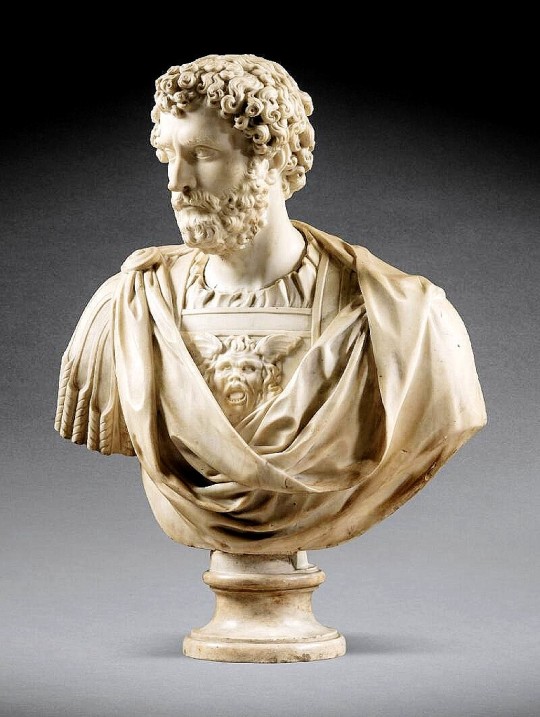
Bust of Emperor Septimius Severus. 1675-1725. French after the antique. marble. http://hadrian6.tumblr.com
185 notes
·
View notes
Text
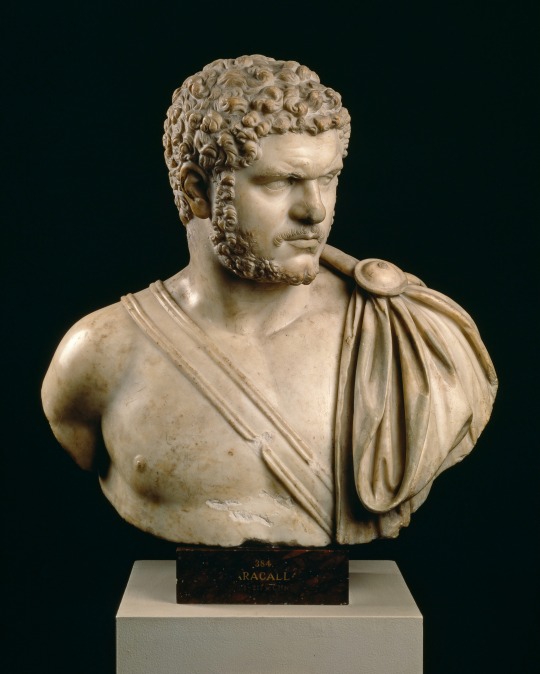
Emperor Caracalla as sole ruler, 212-17, white marble, h. 57 cm, Altes Museum, Staatliche Museen zu Berlin, Berlin.
Marcus Aurelius Severus Antoninus, given the nickname Caracalla (after a hooded Gallic cloak) even during his lifetime, came to power with his younger brother Geta after the death of their father Septimius Severus (r. 193–211). Their coregency suddenly ended when Caracalla ordered the death of Geta and many of his supporters in 212… In Mesopotamia on April 8, 217, after five years as sole ruler, Caracalla too was murdered.
Caracalla looked to Alexander the Great as a role model and sought to imitate him in both conduct and appearance. “He was such a passionate devotee of Alexander’s that he used certain weapons and drinking cups that he thought had once belonged to Alexander. He also set up many portraits of Alexander…” (Cassius Dio, Roman History 78, 7, 1). Caracalla supposedly modelled himself on the Macedonian ruler even in his gestures and facial expressions.
The Berlin portrait depicts Caracalla’s head and entire upper body, as was popular among portrait busts from the second century AD onward. Except for the general’s cloak draped over his left shoulder and the sword belt across his chest, the emperor is nude. The nudity combined with the military trappings elevates him above the realm of the everyday into a heroic sphere. His head is stocky and compact, and turned strongly towards his left shoulder. His hair, rendered in knotlike tufts, lies close to his skull. The tufts at the center of his forehead are clustered together and point upwards, perhaps a play on Alexander the Great’s hairstyle (anastole). A short moustache and beard complete the coiffure. The facial features are full of energy: numerous horizontal and vertical creases on the forehead and bridge of the nose accentuate the powerful movement and drama of the whole physiognomy. The effect is heightened by the partially shaved chin and the small, slightly open mouth. The portrait follows not only images of Alexander but also those of athletes.
In AD 212 this portrait type, the so-called “sole ruler” type, replaced the portrait of Caracalla as the young successor to the throne. It remained in use until AD 217. In presenting himself as a vigorous autocrat living up to athletic and military ideals, the emperor represented himself in a manner very different to that of his predecessors.
— text via Google Arts & Culture (© Verlag Philipp von Zabern, Antikensammlung, Staatliche Museen zu Berlin).
22 notes
·
View notes
Text

Aureus (diameter=20 mm; weight=7.02 g) minted by the Roman emperor Septimius Severus (r. 193-211 CE) in 204. The coin celebrates Septimius' previous campaign in 198 against the Parthian Empire (which had supported Pescennius Niger, a rival claimant to the Roman throne), culminating in the sack of the Parthian capital of Ctesiphon and the annexation of northern Mesopotamia. (This campaign was to have dire consequences for Rome later on: the weakened Parthians were succeeded by the far stronger Sassanian dynasty, which would threaten the Roman/Byzantine East until the Arab conquests of the seventh century.) The obverse depicts the bust of Septimius, who stresses his piety with the cognomen PIUS and the title P(ONTIFEX) M(AXIMUS). On the reverse is the figure of Victory, holding a laurel wreath and palm frond and surrounded by the legend VICTORIA PARTHICA MAXIMA. This aureus is the only one of its kind known to exist and may have been part of a limited issue, perhaps connected to the Ludi Saeculares (Secular Games) that Septimius held in 204 to celebrate the anniversary of Rome's founding. Photo credit: Classical Numismatic Group, Inc. http://www.cngcoins.com
#classics#tagamemnon#ancient history#Ancient Rome#Roman Empire#Roman history#Septimius Severus#Severan Dynasty#art#art history#ancient art#Roman art#Ancient Roman art#Roman Imperial art#coins#Roman coins#Ancient Roman coins#numismatics#ancient numismatics#aureus#goldwork
44 notes
·
View notes
Text
Some more Roman mapmaking.
In the early 200s CE, the emperor Septimius Severus commissioned a massive (60 feet by 45 feet!) marble plan of the city of Rome. Though it was not to scale, it showed the location and floor plan — down to the placement of individual columns — of every major building in central Rome. Sadly, like a lot of Roman marble structures, the map was torn apart by medieval people scavenging for building materials. We only have a few fragments, which give us a tantalizing glimpse of what must have been a stunning display:

Another fascinating “map” fragment from the 200s CE comes from a soldier’s shield, discovered in Syria in the 1920s:

It’s really hard to see, but etched into the leather of this soldier’s equipment is the route he must have taken during his military service from Byzantium north along the coast of the Black Sea:

{WHF} {Ko-Fi} {Medium}
132 notes
·
View notes
Text
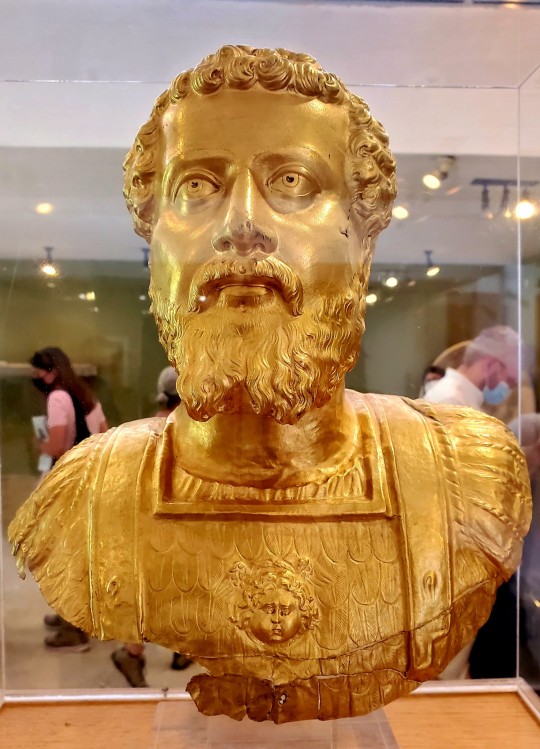
Gold bust of Emperor Septimius Severus (r. 193-211 CE), discovered in Plotinopolis, Greece.
There are only two Roman period gold busts in the world: this, and a modified bust in Switzerland (not open to the public). The above bust was used to top a standard bearer.
On display at the Archaeological Museum in Komotini, Greece.
649 notes
·
View notes
Photo

Beryl intaglio with portrait of Julia Domna, wife of the Emperor Septimius Severus (A.D. 193–211) and mother of Emperor “Caracalla” (A.D. 211–217)
Date: circa 200 AD. Dimensions: H. 15/16 in. (2.4 cm)
Metropolitan Museum of Art.
831 notes
·
View notes